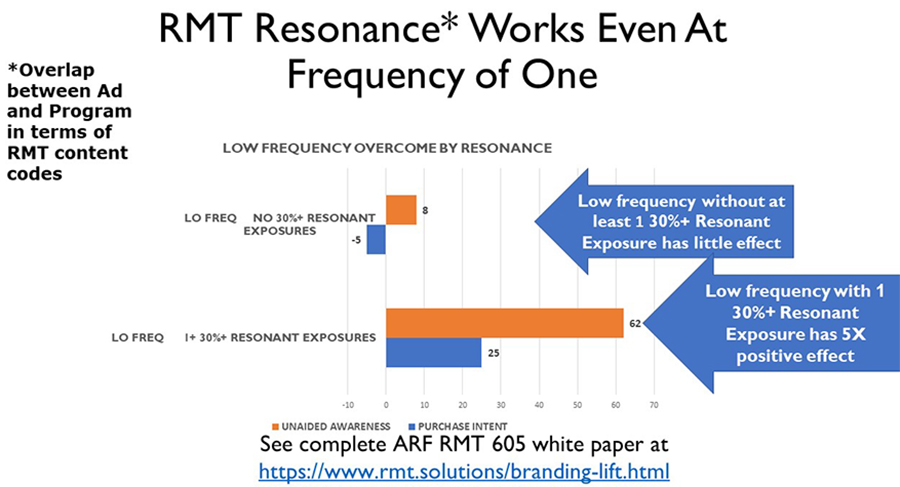The Future: Tiered Targeting

When I was fresh out of school getting my head around advertising and media, I had the benefit of being mentored by a few dozen of the top industry geniuses. They gave me the time because I had studied so intensively, I could hold up my side of the conversation. One of those mentors was Jack Hill, media research director at Ogilvy & Mather. One day he explained to me his new idea which was that targeting was being treated on a binary basis when actually it was more of a continuum, with the bullseye target being worth the most, the inner ring being worth second most, and one or more outer rings still having some value, but dropping off in value as one got farther from the bullseye.
Between that time and now, most of the intervening decades have been described by some as the longest periods of economic growth in history. The thing about sustained economic buoyancy is that it trains us that we can be sloppy and still succeed. Therefore, the survivability of bad practices has persisted for a long time. The key identifying characteristic of bad practices is oversimplification. We have stuck with the idea of binary targets for far too long, because we could get away with it, the economies supported us despite every sloppiness.
One overhears conversations at Michael’s, where everyone in the industry goes to lunch when they are in New York, debating whether products used by nearly everybody really need targeting, and some advertisers are known to pendulum swing from being pro- to anti-targeting about every decade or so. These are signs of oversimplification. Please be wary of such signs. They are clues to opportunities for pragmatic improvement in success rates.
The economic conditions today are much more challenging to established companies. Although trusted brands retain considerable value, distrust has been on the rise for decades and today is so prevalent that new startups have a tailwind in every field. The brands that most need to shed the old sloppy ways and to adopt the most pragmatic proven practices are the biggest brands. They know they are wasting terrific amounts of money, but they are blind to the solutions staring in their faces.
For example, they have finally realized that they are delivering excess frequency, they have spent five years so far building hegemony around models that make weak predictions of reach and frequency that are no better than Sainsbury and Agostini formulas of the 1960s.
The latest bandwagon of Attention has finally somewhat focused their attention on the fact that not all impressions have equal sales and branding effect. To a pragmatist not eager for oversimplified overhyped “solutions” this would cause them to think about how to maximize the impact of each impression – which is by aligning the ad and the media environment most carefully – and by targeting people who are most likely to be positively responsive to an ad – which can be done two ways at the same time:
- Detect the subconscious motivators in the ad and send the ad to people known to have those motivations most strongly.
- Send the ad to the types of people that have shown the highest tendency to sales-respond to ads in general.
You can see in the items 1 and 2 above that there are at least two types of targets that ought to be used in every campaign – returning full circle to where we started with Jack Hill’s idea, which incidentally he called “targetness”. Targetness might be quantified and measured as the potential to contribute to payback on the ad investment.
For example, let’s take a CPG brand. TRA found that 80% of all incremental sales made by advertising for a CPG mature brand were made by Heavy Swing Purchasers (HSPs) – people who already bought the brand occasionally (“Swing”) and spent a lot in the product category (“Heavy”).
This suggests that the bullseye target for a CPG brand are those HSPs whose subconscious motivations align with those in the specific creative execution(s) being used in the campaign.
And the closest target ring to the bullseye are those people who fit one of those definitions but not the other.
The next target ring out might be people who are either heavy purchasers in the category or have motivations aligned with the ad.
The ring surrounding the latter ring might be other people who buy the category but are not 100% loyal to one competing brand thus apparently persuadable (such “frequent shopper card” data in the US are available for more than 86% of all CPG all commodity volume, over 100 million households).
The penultimate ring might be all other people known to buy the category.
The outermost ring would contain all the other people in the country.
TRA data show that advertising every once and a while actually causes sales in that outermost ring. The short term ROI is very low and typically negative (you lose money for a while) but in the long run bringing in someone new to category in general pays off eventually.
The math available today enables optimizing the amount of money you allocate to each of those targets. If you set it to optimize against 36-month sales you can find a reasonable balance between sowing (short and long-term branding) and reaping (short-term sales performance).
Now that we have AI, clean rooms, data science, vast amounts of privacy protected deterministic big data, and cookieless identity solutions, are we going to continue to focus doggedly on lowest CPM and crude heuristics and footrules handed down from a century back? That will not cut it for big brands in the current economic and social climate of anti-bigness and change-seeking. It’s time to do it the right ways.
Streaming is addressable TV, so soon all TV will be addressable. Two-thirds of the US population can already be reached by addressable TV, and 95% are reached by addressable digital, so the degree of targeting recommended above is totally achievable.
Funny, the people who would gain the most by investing in studies to prove the above points beyond the shadow of a doubt, are the television networks and MVPDs. The more they can learn to work together (the JIC proves it can be done) the sooner they can take back potentially $20 billion a year from digital adspend. (2024 forecast US digital adspend $298B, US TV adspend $61B)
Why do we say this? Because addressable TV was invented to lower the CPM against the target. That’s what addressable TV can do, but only if the buy side is actually using sophisticated targeting. If the buy side is aiming to reach a broad demographic the math doesn’t work out for addressable TV. If they are buying a base layer against a broad demographic, they can use linear and all sorts of media for that, but then layer on sophisticated targets that have higher short- and long-term payback per dollar, and use addressable media for the high payback layers. Then the economics work out very well: a win for both sellers and buyers. Continuity and recency can be achieved for the higher payback layers, and the low frequency in the base layer can be impactful by context effects, which if done in a sophisticated manner, work even at very low frequency. If context effects are check-the-box dealt with in an oversimplified overhyped manner their effects will unfortunately tend to cluster below +15% when they can be 2X to 5X among the low-frequency group.

Most of the financial pain to the television industry of the conversion to streaming stems from the reduction in commercial load from ~10-14 minutes per hour down to ~6 minutes per hour. The only solution is higher revenue per minute, which if done with addressable TV and sophisticated targeting, and a small fee for ad: program alignment, can keep buy side CPMs and eCPMs steady while netting much more for the seller. The trick is to charge a lower eCPM for the high payback groups than the brand is now paying to reach those groups within the context of linear buys.
Sophisticated targeting and context alignment also make it possible to prevent excessive frequency, if the television industry collaborates together so that frequency capping works across the entire TV buy. In an earlier article I show that it takes 1800-2800 GRP to get over 90% reach, but using addressable TV to target those not reached by the first 400 GRP can achieve over 90% reach at far lower GRP cost.
When my company Next Century Media brought a productized system of addressable commercials to the television industry in the 1990s there was no pressing need. I warned that digital would take away many dollars if TV didn’t introduce addressability first.
Today there is a pressing need and a pressing opportunity for a win/win for seller and buyer. All we have to do is to give up on oversimplification.
Posted at MediaVillage through the Thought Leadership self-publishing platform.
Click the social buttons to share this story with colleagues and friends.
The opinions expressed here are the author's views and do not necessarily represent the views of MediaVillage.org/MyersBizNet.


